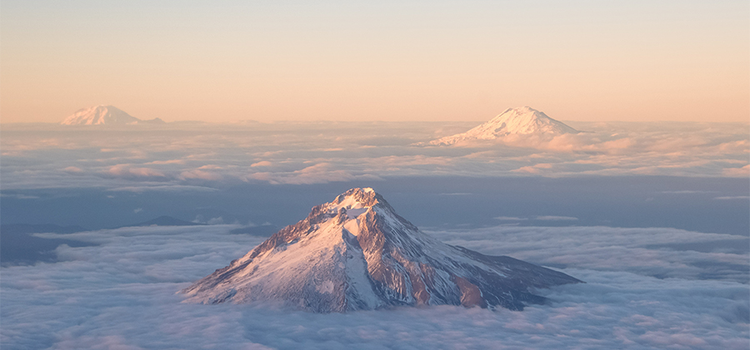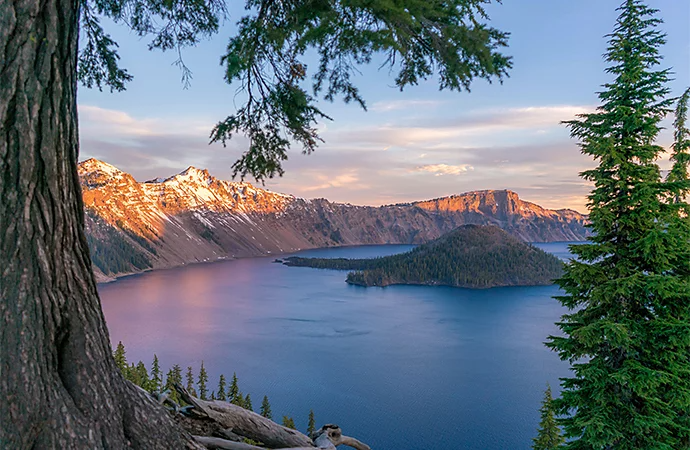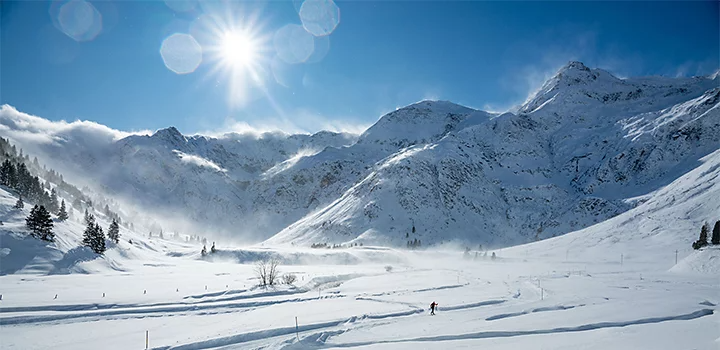Photography
Reach new heights with mountain photography.
Whether you climb the Swiss Alps, the Grand Tetons or just the nearest peak, take great mountain photos with these tips from professional landscape photographers.

Photography
Whether you climb the Swiss Alps, the Grand Tetons or just the nearest peak, take great mountain photos with these tips from professional landscape photographers.
TABLE OF CONTENTS
Find beauty and meaning in the mountains
Amazing mountain images start with a plan
Bring everything (but travel light)
Get the pros’ tips to shooting majestic mountain landscapes all over the globe, including how to:
Mountains are central to human imagination, symbols of nature’s power and wildness and settings for adventure and spiritual awakening. When you head into the mountains you can encounter great subjects (and backgrounds) for landscape photos as well as abstract or minimalist shots.
“Mountain photography is one of the most rewarding styles of photography,” says photographer Tiffany Nguyen. “The best photos you take in the mountains are ones you have to look for, waking up early for a hike to the location.” Give yourself the best chance at great mountain photos — and stay safe in extreme conditions — with thorough research, the right gear and a readiness for the unexpected.
Mountain photography can be more challenging than other types of landscape photography. Weather conditions are unpredictable and when you climb or hike up mountains, you use a lot of energy and risk dehydration if you don’t bring enough water.

Images by Whitney Whitehouse

Look to the Internet for information on trails and conditions. “Consider the time of the year. In the middle of summer, if you know wildflowers are going to be in front of the mountain, you can plan your trip around that,” says photographer Whitney Whitehouse.
Also plan the time of day that you want to shoot. “I love when the sun hits the mountain and the mountain glows,” Whitehouse says. To get the best light, she figures out whether the sun will hit the mountain in the early morning or late afternoon and then makes sure she’s there at the right time. The same type of planning has to go into other timed shots, like capturing the mountain reflected in a still lake or with the moon setting in a blue sky behind it.
Nguyen suggests paying attention to the elevation gains when you plan. The more gain, the longer your trip will take. Hiking blogs can be a useful information source. “You get firsthand experiences of specifically where to turn left or right on a trail, because sometimes your GPS won’t know of certain obstacles there,” she says. And always download off-line maps to your phone, she recommends. “That way, even if you don’t have service, you can see generally where you are on the trail.“
Make use of Google Earth, Google Maps and apps like AllTrails to get a good understanding of the terrain and hikes. “I spend time on Google Earth just looking at different ranges, finding cool features like alpine lakes, meadows or rivers that go near mountains,” Whitehouse says.

Image by Whitney Whitehouse
The land isn’t the only changeable factor. To get a sense of sun and moon paths and their rising and setting times, Whitehouse recommends the PhotoPills app. “It helps me figure out exactly where to be for these moments. There’s also an app called Star Walk that helps you to plan out star constellations for astrophotography.”
Always check the weather, but ultimately be prepared for the forecast to be wrong. “Know that when you get into the mountains, temperatures are usually much colder,” Nguyen says. “You don’t know until you experience for yourself just how volatile the weather is and how quickly it changes.”
You can’t plan for every unexpected event, but you can give yourself alternatives in case your ideal plans fall through. “You need to be flexible with a plan B and plan C,” says Nguyen. “Work with what you have. As beautiful as mountains are, they can also be unpredictable.”

You don’t want to get caught in the mountains without important gear, but you also need to keep in mind that you’ll be carrying any equipment you bring with you, often on your back.
Pack for outdoor adventure. “Conditions can turn on you at any moment, so I always carry a headlamp, extra battery pack, down jacket and rain protection for my gear and backpack,” Nguyen says. Also pack more food and water than you think you’ll need and make sure to have a fully charged phone.
If you’re going to be out overnight, you’ll need more food, maybe a portable cooker and a tent. Nguyen recommends buying lightweight gear. “Even though it’s more expensive, it’s worth it to not carry as much weight.” Whitehouse brings along a Garmin or other GPS satellite communicator for safety.
Camera equipment gets heavy, especially when you carry it uphill for several miles. But in addition to your DSLR or mirrorless digital camera, you should bring enough equipment to get different types of shots. “I like to have a variety of lenses with me because I don’t want to limit the type of photos I can get,” Nguyen says. She usually brings one wide lens and one tighter lens. She also brings a drone (if she’s not in a national park) to get a different perspective.
Whitehouse values variety too. “Even if I think all I want is a wide angle with the reflection of a lake, I could get there and see something cool that I might want to get with a more zoomed-in lens,” she says. What she packs depends on the other gear she has to bring. If she’s going backpacking, she won’t bring more than two lenses. “If I’m just going on a hike, I’ll bring lenses that range from 20 mm to 200 mm. I do a lot of my daytime mountain shots handheld, but if I want to do astrophotography, I bring a tripod,” Whitehouse says.

Pay attention to camera settings and composition.
Because light conditions can vary extensively from one mountain scene to another, experiment with your f-stop settings. “For mountain landscapes, I typically shoot between f/8 and f/11,” Nguyen says. “Over f/11, the image won’t be as sharp and you’re going to have diffraction. When shooting during sunrise or sunset, you want to have the widest aperture possible to let in most of the light, so I shoot at f/1.8 or f/2.8.”
For landscape shots in general, Whitehouse recommends starting with an aperture set at f/8. “If it’s too low, it may be focused in the centre but softer on the outsides,” she says.
There’s more to mountain photography than using a wide-angle lens and following the rule of thirds. “If you’re in the mountains, you can use a 16 mm lens to show a wide view or you can use a 600 mm lens from far away to make the mountain look huge,” Whitehouse says. “You can be miles away and have a person at a tent or standing on a ridge and use a telephoto lens to make the mountain look massive behind them.”

“It’s important to have ideal lighting, like sunset, sunrise or the golden hour. A midday shot is not as impressive. If you find yourself shooting a mountain and nothing’s happening — maybe it’s a boring sunset — try to add an element or subject in the photo that pops and engages your viewer,” says Nguyen.
“If you’re in a mountain range, around sunrise or sunset, the light is a lot softer. You’ll get a haze covering the faraway peaks and it’s fun to play around with those different layers in the landscape,” Whitehouse says.
Touch up your landscape images in Lightroom. With the mobile app, you can get to work before you even get off the mountain. Speed up the editing with presets and make selective edits to keep sharp contrasts between mountain and sky or foreground and background.
Expand your repertoire with other types of nature photography: Head below sea level with underwater photography or get close up with flower photography. Whatever mountains you climb and whatever photos you take along the way, remember to have fun — and always bring a jacket.
Contributors
Tiffany Nguyen, Whitney Whitehouse
Based on your location, we think you may prefer the United States website, where you'll get regional content, offerings, and pricing.